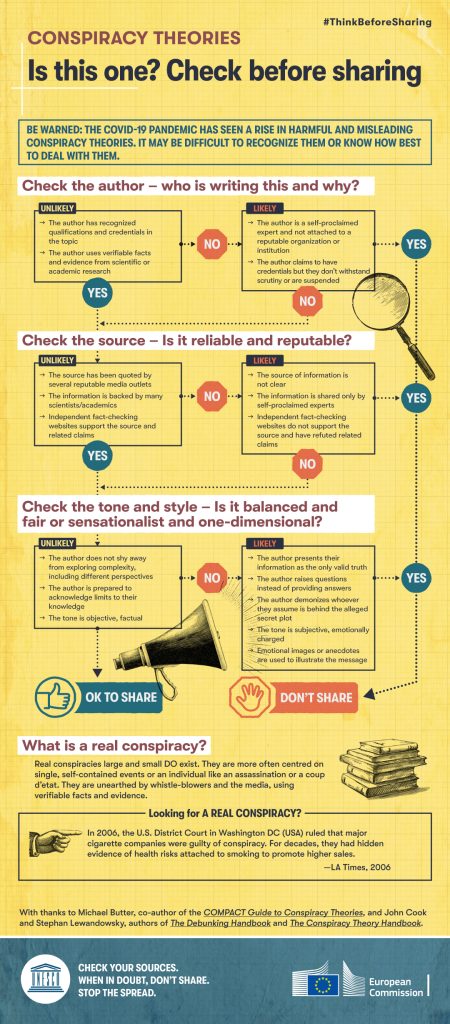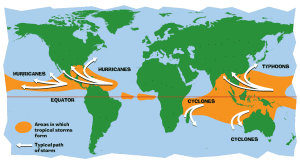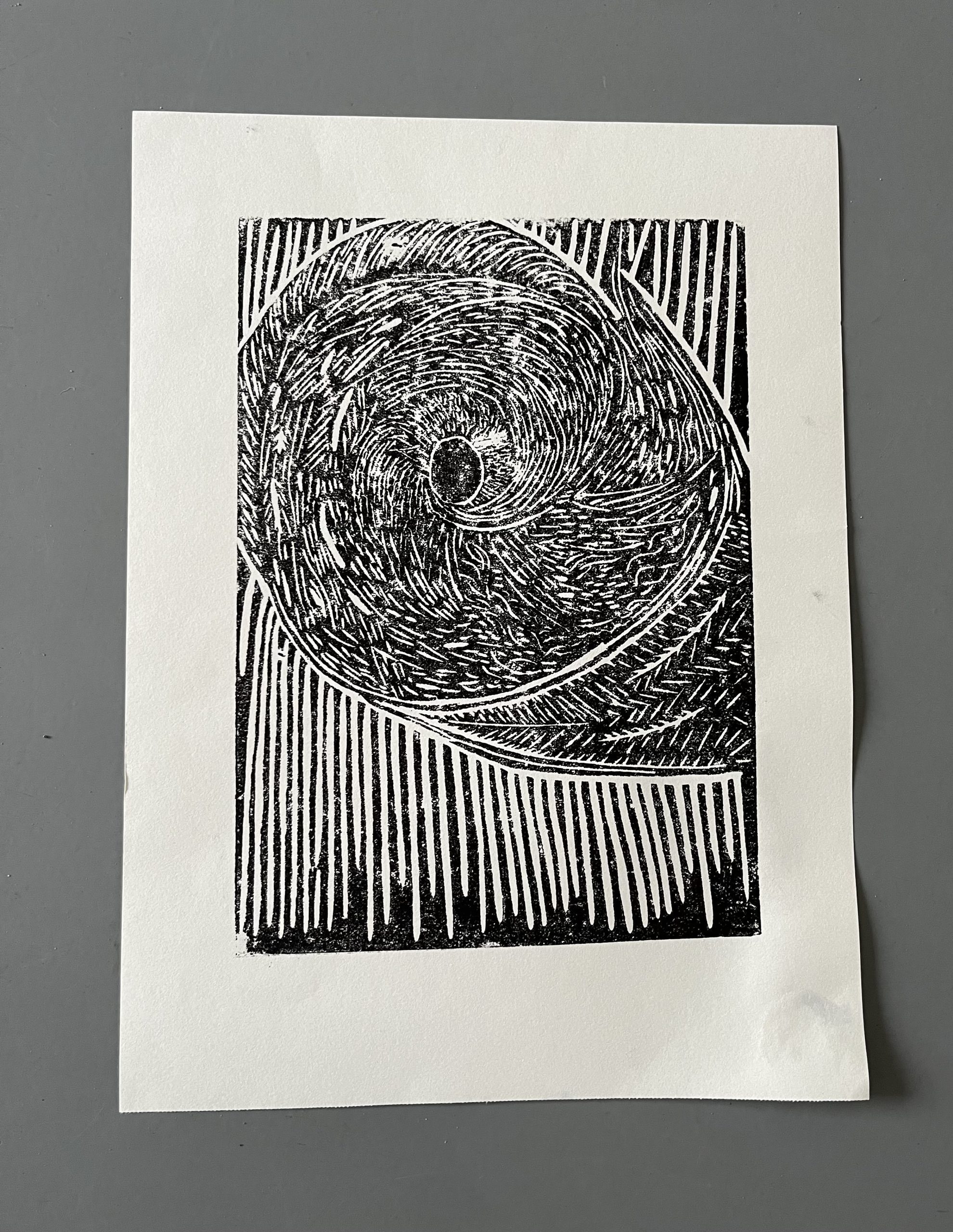7 Alternative explanations
Roxanne Coninckx
An alternative explanation is an explanation of a phenomenon that gives a distinct perspective compared to the most common one. Alternative explanations are used in various fields:
Examples
- Law: When a delict has happened, people involved can defend an alternative explanation, e.g., being at the wrong place at the wrong time.

Murderer back at the crime scene – Forensic science
- Scientific research: In a study showing correlation between two variables, an alternative explanation might suggest that a third factor (confounding variable) is influencing both, rather than one directly causing the other.
- Everyday life: We can all think of an example in our daily life where an alternative explanation was going on while we had other ideas, e.g., you cross someone you know on the street; you look at each other and there is no response. You may think that the person has not recognised you. Turns out that person was the twin of the person you know, so you do not know each other.
Alternative explanations are important for critical thinking, ensuring that we consider multiple possibilities before drawing conclusions. It is a useful tool to discover whether we are biased and that ensures we keep an open mind concerning our hypotheses.
Alternative explanation as a tool
Construction of an alternative explanation may help you to see a subject in diverse ways. It can help you to think creatively and look for counterexamples. When you build your argumentation, you will need to weigh which arguments are more convincing for your alternative explanation compared to the genuinely accepted hypothesis. You will need to gather more evidence and be critical of your own work. Furthermore, you will have to evaluate your arguments carefully to find errors and biases. You might produce a lot of different arguments, which you will need to work out one by one and in the end select which arguments are stronger and weaker. This way your argumentation will become more precise.
Construction of alternative explanations
Construction of alternative explanations should satisfy criteria for an explanation in combination with a unique perspective compared to the standard one. To construct a viable alternative explanation, you need standards for general explanation such as evidence and simplicity. I based my selection of the criteria of alternative explanations on theories of scientific explanation, conspiracy theories and pseudo-science.
Criteria for alternative explanations
- Evidence
To justify your beliefs, you need evidence. A strong alternative explanation must rest on a solid foundation. This means that the sources you rely on should be thoroughly verified, and any scientific research must be conducted with precision and adherence to empirical standards. Both the information from these sources and the research process itself must be transparent.
Beware of selective coherentism, which occurs when you accept only evidence that supports your perspective while ignoring or dismissing conflicting data. This often leads to cherry-picking information to fit the explanation. While constructing an alternative explanation, you may start by using evidence that challenges the official theory. However, further research should focus on finding credible evidence to substantiate these claims. Another approach involves identifying unexplained aspects of the official theory and attempting to fill these gaps with a new explanation. There may also be instances where a theory is left untested, even when testing is possible, or where tests are designed in ways that can only confirm the theory.
Be cautious of internal flaws, such as inconsistencies, explanatory gaps, reliance on improbable or weak assumptions, unrealistic psychological motives, poorly constructed technical claims, or contradictions with observed facts, including failed predictions.
- Intention
Intention is the conscious aim or plan that directs a person’s thoughts, actions, and decisions toward a specific goal. Our actions and behaviors are guided by intention, shaped by what we value and believe. The intention behind an alternative explanation could range from satire to political influence, or it might even be unintentional. When evaluating alternative explanations, it is wise to consider the explicit and implicit intentions or goals they may serve. For example, an alternative explanation might deliberately aim to shift your political views.
- Unification
Unification is the process of bringing together distinct elements of your explanation into a cohesive whole. You need to connect your explanation to different theories or phenomena under a single overarching theory or scientific paradigm. We can argue that the explanation is, in some sense, reduced to the familiar. When a surprising or strange phenomenon occurs, we like to presume that it relates to other things that are familiar to us, this way an explanation naturally becomes part of our understanding.
- Simplicity
Simplicity is a key theoretical virtue. Simpler theories are often (implicitly) preferred because they are more straightforward and without unnecessary complexity. This idea is part of Occam’s Razor, which suggests that, when faced with competing hypotheses, the simpler one is preferable. However, be careful not to oversimplify. Simplicity is valued because it enhances clarity, coherence, and explanatory power, reducing the risk of introducing errors or ambiguities.
PITFALLS of alternative explanations
Not all alternative explanations are carefully constructed. Some alternative explanations are introduced as a joke or satire. Others are deliberately launched to cause confusion, to misinform and polarise people. This may lead to conspiracy theories that have social and political implications.
Examples of conspiracy theories
- Obama “birther” theory in which people believe that Barack Obama has fabricated his birth certificate.[1]
Evaluation
| Evidence | – Lack of supportive evidence: Obama’s birth certificate was released by the White House in 2008, the certificate is authentic, this is confirmed by the Hawaii State Department of Health.[2] – False claims spread by Donald Trump during speeches and on social media.[3] – Transparency from Obama: Obama provided documentation in order to counter claims of secrecy or deception. |
| Intention | – Explicit goals: the birther theory appears aimed at discrediting Obama’s eligibility and legitimacy as president. This undermining of his presidency aligns with political opposition. – Implicit goals: the theory exploited racial bias, leveraging Obama’s Kenyan heritage through his father to sow doubt among voters familiar with his background. – Political strategy: Donald Trump used the theory as a tactic to gain political attention and support among certain voter demographics. |
| Unification | – Incompatibility with other evidence: the birther theory does not integrate well with broader, verified evidence, such as historical records, testimonies from Hawaiian officials, or the existence of contemporary birth announcements in local papers.[4] – Creation of contradictions: by rejecting verified facts, the theory creates more inconsistencies, such as requiring elaborate conspiracies involving multiple government institutions and historical documents. – Failure to create a cohesive framework in which the claims are established with evidence. |
| Simplicity | – Unnecessary complexity: the theory relies on convoluted ideas, such as alleging widespread collusion involving Obama’s family, the state of Hawaii, the media, and other entities. These assumptions introduce unnecessary complexity. – Occam’s Razor: applying Occam’s Razor suggests that the simplest explanation—Obama was born in Hawaii, as proven by documentation and confirmed by authorities—is far more plausible than an elaborate conspiracy. – Complicated alternatives: the theory’s alternative explanations (e.g., falsified records or dual citizenship conspiracies) are far-fetched and lack evidence. |
Using the four criteria the conclusion is that the theory lacks credible evidence and relies on disinformation. The intentions appear politically and racially driven rather than objective. It fails in unification since the theory is unable to cohere with verified facts and creates unnecessary contradictions. It introduces needless complexity compared to the clear, evidence-backed conclusion.
The Obama birther theory is a classic example of a conspiracy theory that does not hold up under rational thinking. It lacks factual support, is driven by questionable intentions and fails to provide a coherent or parsimonious alternative explanation.

- QAnon and Deep State: this is a far-right American political conspiracy theory and political movement that originated in 2017. QAnon centres on fabricated claims made by an anonymous individual or individuals known as “Q,” claiming to be a high-level U.S. government insider with access to classified information.[5] Those claims have been relayed and developed by online communities and influencers. QAnon alleges a secret war between President Donald Trump and a global cabal of elites involved in child trafficking, satanic rituals, and efforts to control world events. The theory incorporates other conspiracy ideas, such as the “Deep State.”
The “Deep State” refers to an alleged shadowy network of government officials, bureaucrats, and influential figures operating behind the scenes to manipulate policy and undermine elected leaders, particularly Trump. While it is not always tied to QAnon, the concept has been used to argue that unelected officials are working to subvert democratic processes.
Evaluation
| Evidence | – Lack of verifiable evidence: claims from “Q” lack verification. No direct evidence supports the existence of a global satanic cabal or Trump waging a secret war against one. – Failed predictions: numerous predictions by Q (e.g., mass arrests of elites, Trump reclaiming the presidency after 2020) have not materialized, further undermining the credibility of the theory.[6] [7] – Disinformation sources: much of QAnon relies on fabricated “evidence” and misinterpretations of unrelated events or documents. – Speculative nature: a secret cabal working against Trump lacks substantive proof. – Misinterpretation of normal processes: routine government resistance, leaks or policy disagreements are often cited as “Deep State” actions without evidence of coordinated conspiracies. |
| Intention | – Explicit goals: QAnon appeals to individuals dissatisfied with mainstream institutions, fostering distrust in government, media, and public health organizations. The Deep State narrative is often used by political figures to delegitimize criticism or opposition, portraying dissent as part of a sinister plot. – Implicit goals: QAnon serves as a tool for political manipulation, rallying support for Trump and spreading far-right ideology. It also capitalizes on moral outrage (e.g., claims of child trafficking) to recruit followers. It may serve as a way to redirect attention from policy failures or unpopular decisions by blaming unseen forces. |
| Unification | – Fragmented and contradictory: QAnon attempts to tie together disparate conspiracy theories (e.g., anti-vaccine rhetoric, 5G fears, satanic panic), but these lack coherence. The result is a sprawling, contradictory narrative that fails to form a unified explanation.[8] – Conflicts with reality: the theory does not reconcile with verified facts, such as the nonexistence of many alleged crimes or individuals involved. – Simplistic unification: the Deep State narrative often oversimplifies complex political and bureaucratic dynamics, reducing disagreements to secretive plots. It ignores regular explanations like partisan politics, institutional inertia, or normal policy disagreements. |
| Simplicity | – Incredible complexity: QAnon creates an unnecessarily elaborate narrative requiring belief in global conspiracies, satanic elites, secret wars, and coded messages. This complexity violates Occam’s Razor. – Inconsistent claims: the theory’s ever-expanding scope makes it increasingly unclear and difficult to substantiate. |
Conclusion
Both QAnon and the Deep State are conspiracy theories that fail to meet standards of rational analysis. They thrive on misinformation, emotional appeal, and political exploitation rather than presenting credible, unified, or simple explanations of real-world events.
The biggest concerns regarding conspiracy theories are that there usually is a confirmation bias and that pseudoscience is used.
PHILOSOPHICAL Exercises
- Research a conspiracy theory
Find at least 3 sources with evidence that support the theory. Evaluate them critically. Follow the examples given above.

- Socratic dialogues
Imagine that you are in dialogue with someone who is convinced of a conspiracy theory.
First, listen to each other without judging. Why does one of you believe one explanation and the other another?
Second, use the infographic by the European Commission to find out whether or not you are dealing with a conspiracy theory.
Third, try to analyse the alternative explanation by evaluating it looking at evidence, intention, unification and simplicity.
Hurricane: common explanation [9] [10] [11]
Hurricanes are tropical storms that form over the Atlantic Ocean or Pacific Ocean.

In order for a hurricane to form, two things must be present: a weather disturbance, such as a thunderstorm, that pulls in warm surface air from all directions and water at the ocean’s surface that is at least 80° Fahrenheit (27° Celsius). Because it is the interaction of warm air and warm seawater that spawns these storms, they form over tropical oceans between about 5 and 20 degrees of latitude. At these latitudes, seawater is hot enough to give the storms strength and the rotation of the Earth makes them spin.
Hurricanes start simply with the evaporation of warm seawater, which pumps water into the lower atmosphere. This humid air is then dragged aloft when converging winds collide and turn upwards. At higher altitudes, water vapor starts to condense into clouds and rain, releasing heat that warms the surrounding air, causing it to rise as well. As the air far above the sea rushes upward, even more warm moist air spirals in from along the surface to replace it.
As long as the base of this weather system remains over warm water and its top is not sheared apart by high-altitude winds, it will strengthen and grow. More and more heat and water will be pumped into the air. The pressure at its core will drop further and further, sucking in wind at ever increasing speeds. Over several hours to days, the storm will intensify, finally reaching hurricane status when the winds that swirl around it reach sustained speeds of 74 miles per hour (119 km/h) or more.
Eventually, hurricanes turn away from the tropics and into mid-latitudes. Once they move over cold water or over land and lose touch with the hot water that powers them, these storms weaken and break apart.
Recent studies have shown a link between ocean surface temperatures and tropical storm intensity — warmer waters fuel more energetic storms.
Hurricane: Alternative explanation
Climate engineering, also known as geoengineering, refers to deliberate intentional large-scale alteration of the weather on Earth as a counter reaction to climate change. Scientists are exploring whether it is possible to alter the weather in order to slow down or reverse global warming. This research is relatively new and early experiments and research are underway to assess its potential. However, these findings are torn out of context and misinterpreted by conspiracy theorists.

Recent conspiracy theories about hurricanes Helene and Milton claim that the US government uses geoengineering to control the weather. Marjorie Taylor Greene, far-right representative from Georgia, tweeted after hurricane Helene had passed that “they” control the weather. By “they” she hints towards the QAnon theories suggesting that a small elite in power — particularly Democrats — engineered the hurricanes to target Republican-majority areas and suppress voter turnout.
In support of her claims, Greene shared a 2016 clip of former CIA director under the Obama legislation John Brennan speaking about geoengineering. In the video, Brennan mentions how these theories could help solve the effects of global climate change. His remarks, taken out of context, were misused to suggest that such technologies are actively being deployed for inappropriate purposes.
Analysis of both explanations using preceding criteria
| Criterium | Standard explanation | Climate engineering |
| Evidence | – Verifiable proof: the evidence used by the standard explanation is clearly indicated. They are transparent about the sources and scientific methods. These methods are discussed, approved and checked by the scientific community. The sources are reliable, e.g., universities, IPCC, UNDRR, NASA, etc. They use meteorological research, satellite observations and climate models. – Predictions: weather scientist can observe, model and predict hurricane formation with increasing accuracy. – Precautionary approach: the standard explanation calls for more research and transparent evaluations before using geoengineering, they want to be cautious and work evidence-based. The UN acknowledge potential risks of geoengineering including unforeseen environmental consequences, ethical concerns and geopolitical tensions. [12] – Peer-review consensus: the scientific community widely accepts this explanation, supported by peer-reviewed studies and extensive empirical evidence. |
– Lack of verifiable proof: no scientific evidence supports the claim that hurricane Milton was artificially created or controlled through geoengineering. Weather patterns including hurricanes, are well-understood natural phenomena driven by atmospheric and oceanic conditions. – Misinterpretation of statements: the sources that are used are misleading and torn out of context, e.g., the clip of John Brennan. – Scientific consensus: climate scientists widely agree that geoengineering, though studied as a potential response to climate change, has not advanced to the stage where hurricanes could be controlled or engineered. [13][14][15] |
| Intention | – Explicit goals: the primary goal of the standard explanation is to understand and predict hurricanes while minimizing risks to humanity and ecosystems. Geoengineering is viewed as a potential complement to emissions reductions, not a replacement. This reflects a genuine effort to explore all options for solving global warming.[16] – Transparency: meteorological research and forecasting methods are openly shared. – Global education: inform all nations about the formation of hurricanes in a changing climate, so that action can take place, particularly in vulnerable and developing countries, which are disproportionally affected by more frequent or stronger hurricanes caused by global warming and may lack resources to cope with the consequences of climate change. |
– Explicit goals: the conspiracy suggests that hurricanes are being weaponized for political purposes, targeting Republican-majority areas to suppress voter turnout. This claim appears designed to polarise and create a distrust in government institutions. – Implicit goals: the theory plays into broader fears about government, scientific advantages, and elite control, appealing to individuals who already distrust mainstream narratives. – Manipulative narratives: by tying the hurricane to a supposed plot by Democrats and referencing QAnon beliefs, the story exploits existing political and ideological tensions. |
| Unification | – Coherent: the explanation unifies principles of meteorology, thermodynamics and fluid dynamics, connecting hurricane formation in different regions and tying these events to larger climate systems. – Consistency: it aligns with evidence and observations made with regard to climate change and other weather phenomena. – Global application: the theory is universal and explains hurricane formation in different regions. |
– Lack of coherence: the theory does not align with known meteorological science or historical hurricane data. Instead, it introduces an implausible connection between routine weather events and a vast, secretive conspiracy involving geoengineering. – Contradictions with reality: the theory ignores scientific evidence about natural hurricane formation, the lack of technological capacity to control weather at this scale and the absence of evidence of such an event. – Mistrust of official data provided by government and other scientific sources. |
| Simplicity | – Normal narrative: the standard explanation of hurricanes takes a clear position, uses the regular methods and theories to explain these phenomena. The explanation is clear and logically structured, focusing on the interaction between warm water, moist air and atmospheric pressure. It avoids unnecessary assumptions or complexities. – Occam’s Razor: the simplest explanation, where a hurricane formation is the result of natural phenomena is the most plausible with the most evidence, without speculation or unverifiable elements. |
– Complex narrative: the idea that the hurricanes are engineered as part of a political plan with advanced hidden technologies, government coordination and an international cover-up is complex. – Occam’s Razor: the simplest explanation, where a hurricane formation is the result of natural phenomena, is more plausible and consistent with observable data. |
Conclusion
The common explanation of a hurricane is based on evidence-based and transparent observations, supported by a strong scientific consensus. This approach reflects a commitment to evaluating data accepted by the scientific community. The intentions of the scientific world are clear: to gain and share knowledge, learn from research, make accurate predictions, and develop effective solutions to address climate change. The common hurricane explanation is in line with established scientific understanding, emphasizing simplicity and logical reasoning.
In contrast, the geoengineering conspiracy theory lacks evidence and misrepresents or distorts scientific findings. The “evidence” used to support this theory is often taken out of context, misinterpreted, or entirely fabricated. The intentions behind promoting such theories are typically political, aiming to gain influence, polarize public opinion, and foster distrust in governments and scientific institutions. Unlike the UN’s unified and logical framework, the geoengineering conspiracy theory is fragmented, overly complex, and disconnected from credible scientific knowledge.

Additional media
Infographics by the European Commission regarding dealing with conspiracy theories.
This is an interesting podcast about conspiracy theories in Dutch.
References
Baggini, J. & Fosl, P.S. (2010). The philosophers toolkit: a compendium of philosophical concepts and methods. Chichester, West Sussex: Wiley-Blackwell. https://search.ebscohost.com/login.aspx?direct=true&scope=site&db=nlebk&db=nlabk&AN=312278.
Douven, I. (2021). Abduction. The Standford encyclopedia of philosophy. Https://plato.standford.edu/archives/sum2021/entries/abduction/
Hansson, S. O. (2021). Science and Pseudo-Science. The Stanford Encyclopedia of Philosophy. https://plato.stanford.edu/archives/fall2021/entries/pseudo-science
Lipton, P. (2001). What good is an explanation? Springer Verlag. (pp. 43-59)
Nera, K. Bertin, P., Biddlestone, M., Tagand, M., Klein,O. (2024). Are Conspiracy theory believers drawn to conspiratorial explanations, alternative explanations, or both? Journal of experimental social psychology. 115.https://doi.org/10.1016/j.jesp.2024.104640
Pauly, M. (Z.d.) Conspiracy theories. IEP. Geraadpleegd op 4 oktober 2024 van https://iep.utm.edu/conspiracy-theories/
- https://www.newscientist.com/article/mg22430004-000-why-are-we-so-eager-to-embrace-conspiracy-theories/ ↵
- https://www.factcheck.org/2011/04/indeed-born-in-the-u-s-a/ ↵
- https://edition.cnn.com/2016/09/09/politics/donald-trump-birther/index.html ↵
- https://www.newspapers.com/article/honolulu-star-advertiser-barack-obama-bi/18503640/ ↵
- https://slate.com/technology/2020/09/qanon-identity-revealed-explained.html ↵
- https://gnet-research.org/2021/03/31/how-qanon-reacts-to-failed-predictions/ ↵
- https://en.wikipedia.org/wiki/QAnon ↵
- https://en.wikipedia.org/wiki/QAnon ↵
- https://oceanexplorer.noaa.gov/facts/hurricanes.html ↵
- https://oceanservice.noaa.gov/facts/hurricane.html ↵
- https://www.undrr.org/understanding-disaster-risk/terminology/hips/mh0057 ↵
- https://www.undp.org/future-development/signals-spotlight-2023/regulating-unknown ↵
- https://www.noaa.gov/news/fact-check-debunking-weather-modification-claims ↵
- https://science.feedback.org/humans-do-not-have-technology-manipulate-hurricanes/ ↵
- https://www.knmi.nl/kennis-en-datacentrum/uitleg/geo-engineering-sleutelen-aan-weer-en-klimaat ↵
- https://www.un.org/sustainabledevelopment/climate-action/#:~:text=Goal%2013%20calls%20for%20urgent,well%20below%202%20degrees%20Celsius. ↵
